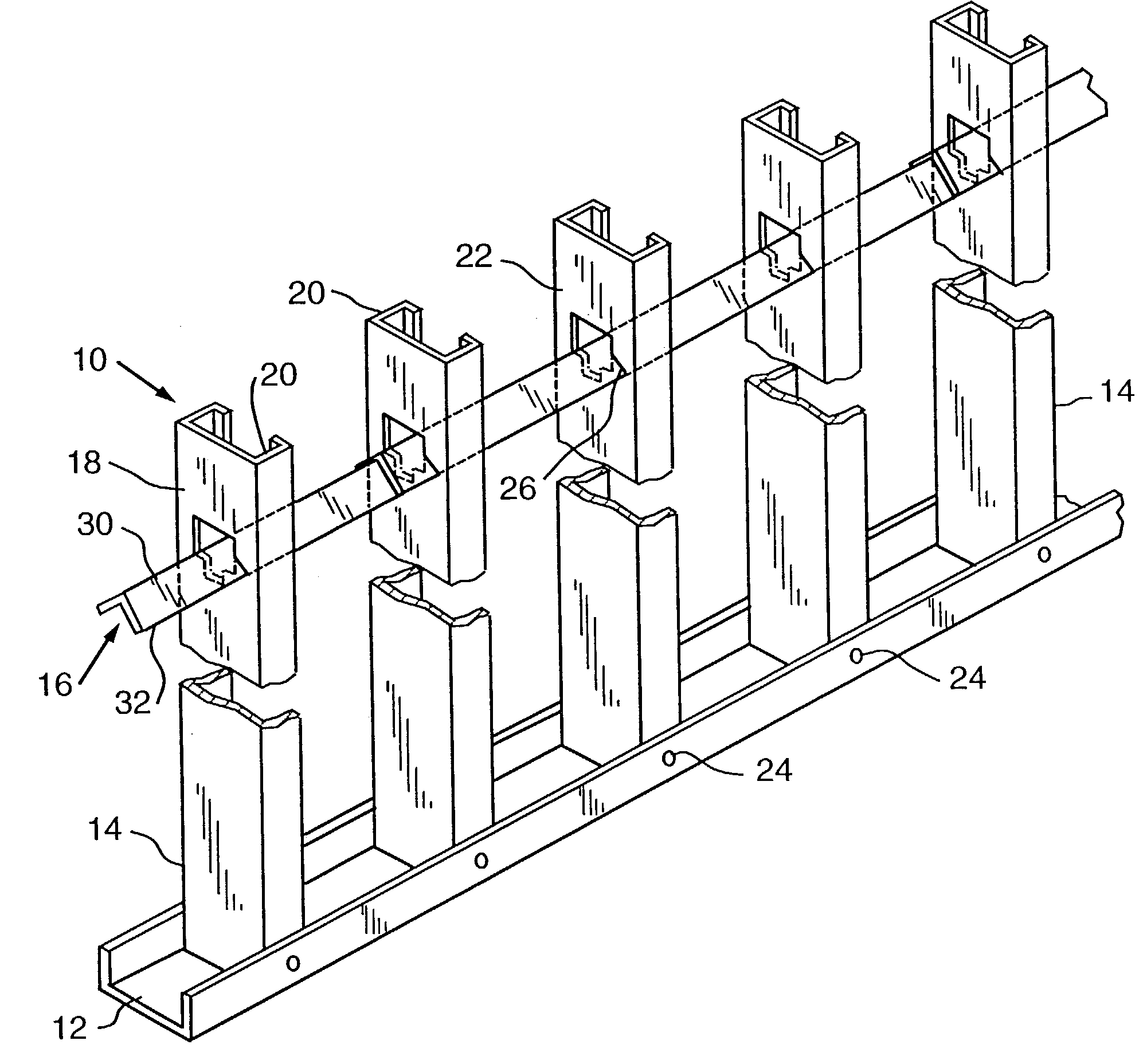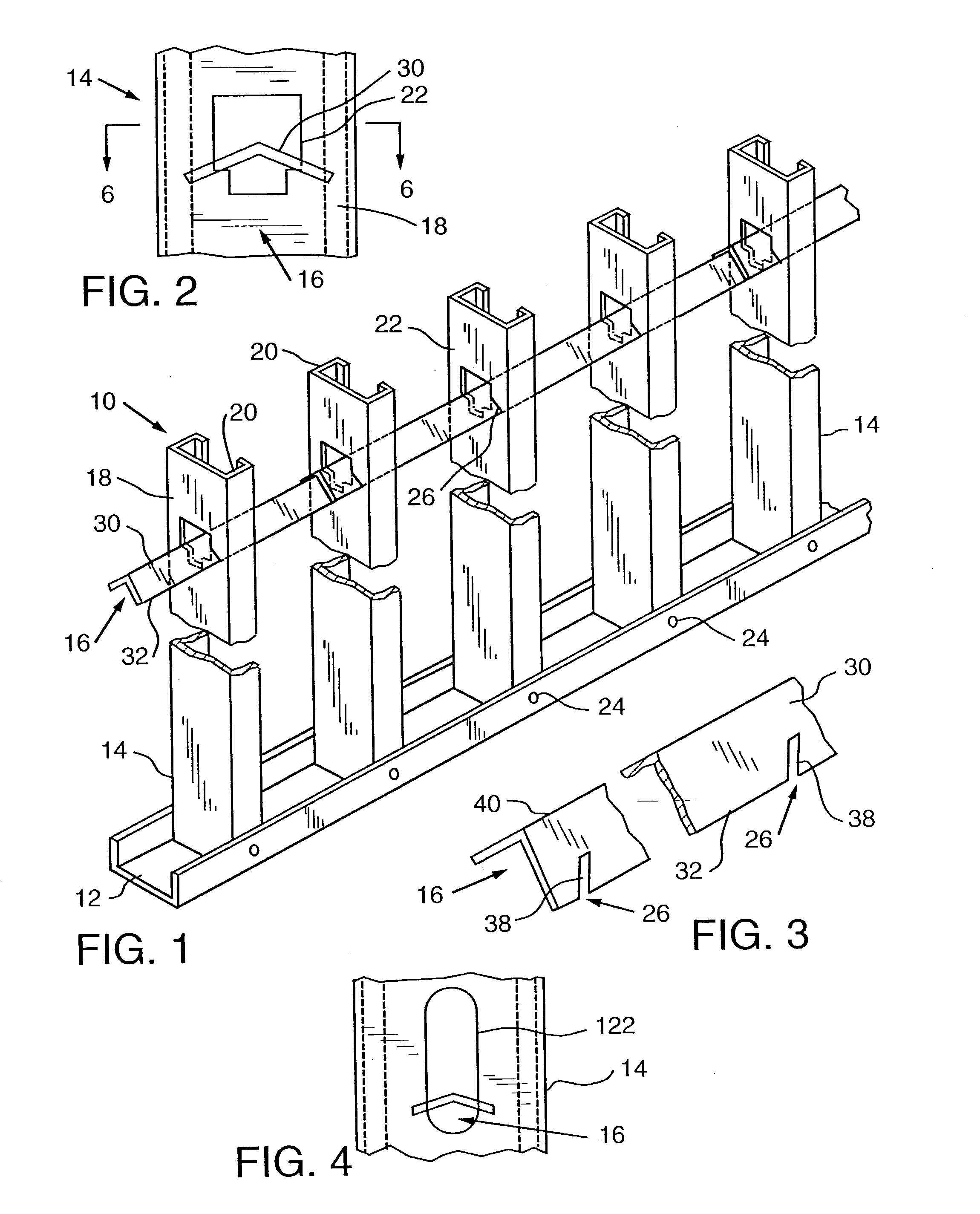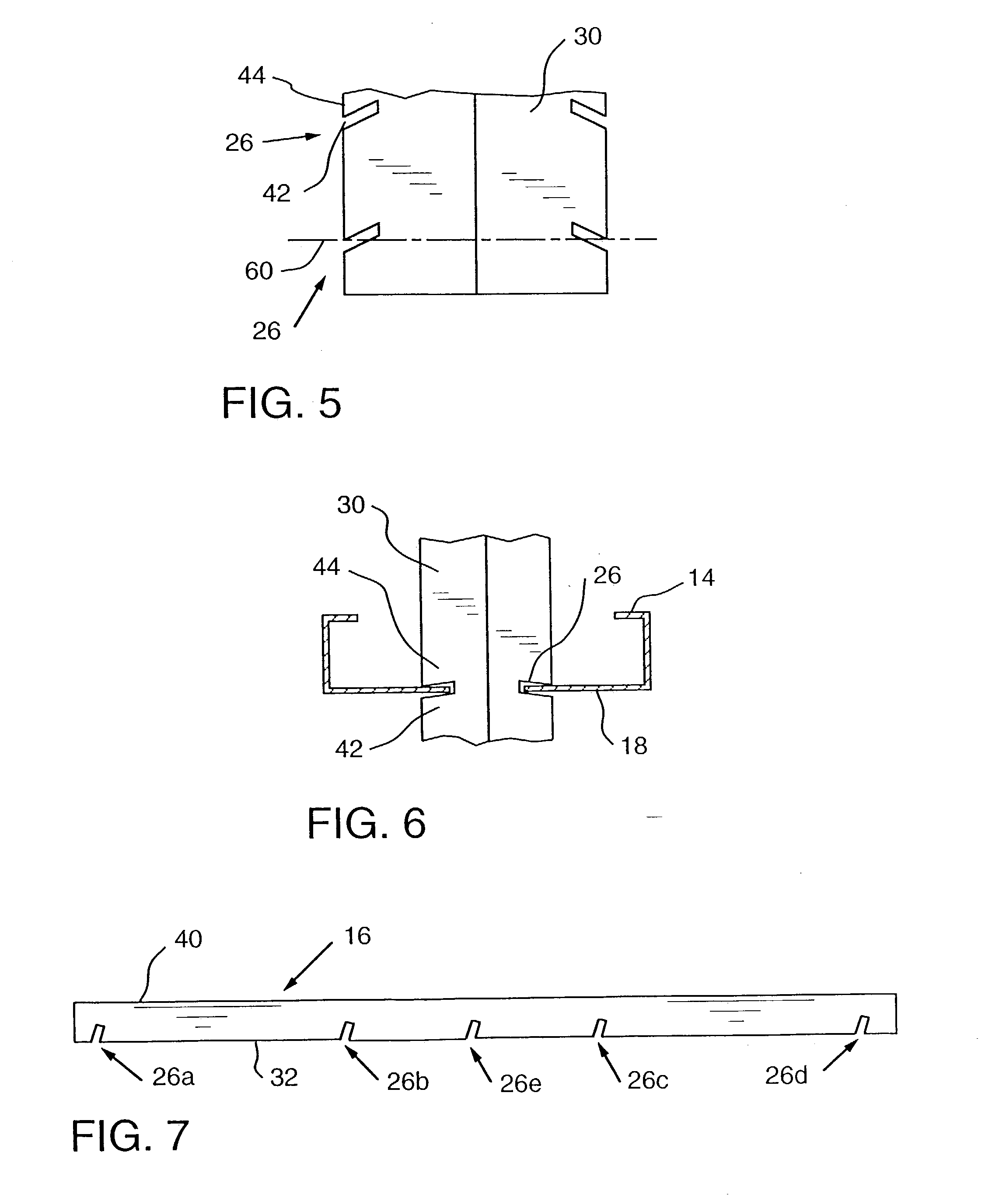Support apparatuses and jambs for windows and doors and methods of constructing same
a support apparatus and a technology for windows and doors, applied in the field of stud wall systems, can solve the problems of affecting the strength of the stud, the time-consuming process of the metal stud wall system, and the inability to replace the stud, etc., to achieve the effect of reducing the amount of time, preventing twisting, turning or bowing of the stud, and improving strength and rigidity
- Summary
- Abstract
- Description
- Claims
- Application Information
AI Technical Summary
Benefits of technology
Problems solved by technology
Method used
Image
Examples
Embodiment Construction
[0057] FIG. 1 illustrates the skeleton of a metal stud wall 10 according to one embodiment of the present invention. In this embodiment, the metal stud wall 10 generally comprises a base track 12, a plurality of metal studs 14 disposed in a row, at least one bridging / spacing member 16, and wall panels (not shown). The wall panels, such as wall board, may be secured in a well known manner to one or both sides of the metal studs to close the wall and to form the exterior surface or surfaces of the wall. Alternatively, one or both sides of the metal studs may be faced with masonry, such as a brick wall facing on an exterior side of a curtain wall.
[0058] The studs 14, as illustrated in FIG. 1, are generally C-shaped, as is conventional. The studs 14 have a web 18 and a pair of L-shape flanges 20 perpendicular to the web 18. There is also one or more openings 22 in the web 18. The openings 22 heretofore have been provided in metal studs to permit bridging members, electrical conduit and / ...
PUM
 Login to View More
Login to View More Abstract
Description
Claims
Application Information
 Login to View More
Login to View More - R&D
- Intellectual Property
- Life Sciences
- Materials
- Tech Scout
- Unparalleled Data Quality
- Higher Quality Content
- 60% Fewer Hallucinations
Browse by: Latest US Patents, China's latest patents, Technical Efficacy Thesaurus, Application Domain, Technology Topic, Popular Technical Reports.
© 2025 PatSnap. All rights reserved.Legal|Privacy policy|Modern Slavery Act Transparency Statement|Sitemap|About US| Contact US: help@patsnap.com



